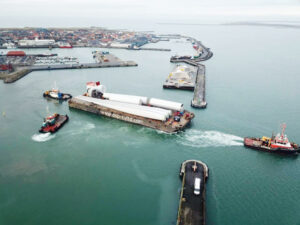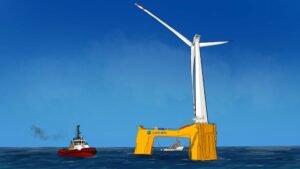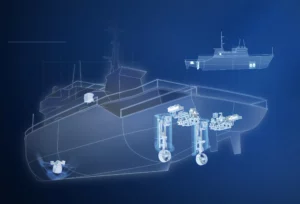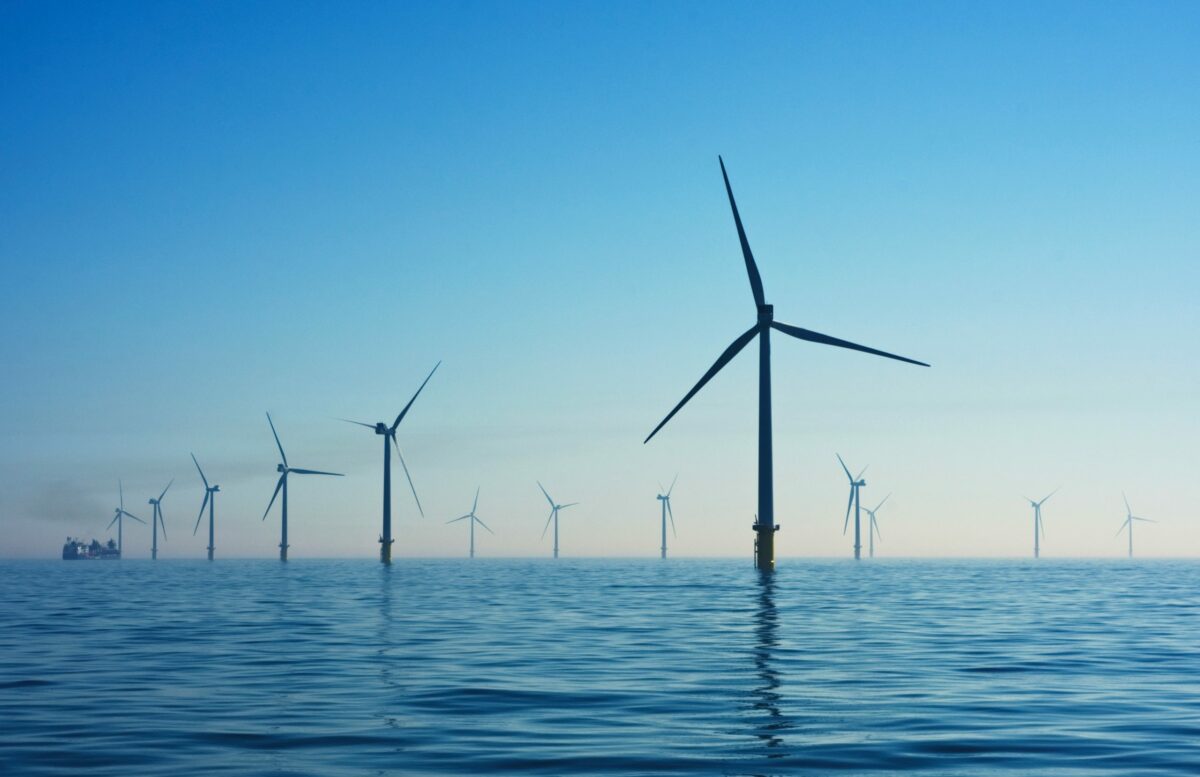MPVs and Offshore Wind Farms
Introduction
Offshore wind farms have emerged as a cornerstone in the global transition towards clean and sustainable energy. While much of the focus is placed on the towering wind turbines that harness the power of the wind, there is another critical component that is often overlooked— the vessels that facilitate the construction, operation, and maintenance of these offshore installations. Among the fleet of vessels that play crucial roles in the lifecycle of a wind farm, Multicat/Multipurpose Vessels (MPVs) stand out for their adaptability, versatility, and sheer capability to handle a broad range of offshore operations.
In this in-depth analysis, we explore the indispensable role of MPVs in supporting the offshore wind industry, particularly in Europe and Asia. From construction and maintenance to repairs and decommissioning, MPVs have proven to be the backbone of offshore wind farm operations. This article will walk you through their unique capabilities, highlight their importance in key projects, and discuss their growing role as offshore wind energy expands globally.
Chapter 1: The Critical Role of MPVs in Offshore Wind Farm Operations
 Multicat/Multipurpose Vessels (MPVs) are engineered to perform a wide array of tasks, which is why they have become indispensable to the offshore wind sector. Their flexibility allows them to be used in a variety of operations, ranging from transporting materials to and from wind farm sites, towing, anchor handling, and even supporting cable laying and maintenance tasks. Unlike specialized vessels that have singular functions, MPVs can pivot from one task to another without the need for extensive modifications or downtime, making them highly cost-effective and efficient.
Multicat/Multipurpose Vessels (MPVs) are engineered to perform a wide array of tasks, which is why they have become indispensable to the offshore wind sector. Their flexibility allows them to be used in a variety of operations, ranging from transporting materials to and from wind farm sites, towing, anchor handling, and even supporting cable laying and maintenance tasks. Unlike specialized vessels that have singular functions, MPVs can pivot from one task to another without the need for extensive modifications or downtime, making them highly cost-effective and efficient.
A perfect example of this versatility can be seen in the operations conducted by Acta by Jifmar, a leading company in the offshore wind sector. In Denmark, the company’s 22-meter Coastal Boxer MPV was instrumental in providing marine support during the construction of an offshore wind farm. Meanwhile, their 35-meter Coastal Discovery was called upon for a UK-based offshore cable repair project, demonstrating the MPV’s capability to assist in diverse functions. What’s more, the shallow draft of these vessels made them particularly suited for operating in shallow waters, an often challenging environment for larger specialized ships.
As offshore wind farms grow larger and more complex, the need for adaptable vessels like MPVs continues to increase. The capacity to switch between different roles— from construction support to ongoing maintenance— without having to swap out vessels keeps operational costs down and minimizes project delays, solidifying the role of MPVs as critical assets in the offshore wind energy industry.
Chapter 2: Global Expansion and Emerging Offshore Wind Markets
 While Europe has been the global leader in offshore wind energy for many years, new regions are quickly catching up. In Asia, particularly in countries like Taiwan and China, offshore wind is experiencing exponential growth. These countries have made significant investments in renewable energy as part of their national energy strategies, and MPVs are playing a crucial role in these efforts.
While Europe has been the global leader in offshore wind energy for many years, new regions are quickly catching up. In Asia, particularly in countries like Taiwan and China, offshore wind is experiencing exponential growth. These countries have made significant investments in renewable energy as part of their national energy strategies, and MPVs are playing a crucial role in these efforts.
Taiwan, for example, has seen rapid expansion in its offshore wind capabilities, thanks in part to the deployment of MPVs like Acta by Jifmar’s Coastal Ace. This particular vessel has been engaged in the early stages of offshore wind farm construction, specifically tasked with the maintenance and installation of high-tech measurement buoys. Taiwan’s geography, combined with its strong offshore wind conditions, makes it an ideal location for further growth in this sector, and MPVs are facilitating this expansion.
China is another prime example of the global growth in offshore wind energy. The commissioning of the Fenghua 23, a cutting-edge multipurpose vessel built by Fujian Mawei Shipbuilding, demonstrates the increasing sophistication of vessels designed to support offshore wind projects. The Fenghua 23 is equipped with dynamic positioning (DP2), a four-point mooring system, and specialized equipment such as cable-laying systems, making it one of the most advanced vessels of its kind. This vessel is currently operating in the Chinese offshore wind sector, where it is tasked with cable laying, repairs, and providing logistical support for wind turbine operations.
The expansion of offshore wind farms in Asia signals a broader global trend— one that is increasingly reliant on the adaptability and functionality of MPVs to meet the logistical and operational demands of wind farm projects in challenging marine environments.
Chapter 3: The Unique Capabilities and Technology Behind MPVs
 One of the distinguishing features of MPVs is their shallow draft combined with their robust towing, anchor-handling, and lifting capabilities. This allows them to operate efficiently in shallow waters, where larger vessels often struggle. In addition, many MPVs are equipped with advanced dynamic positioning systems, allowing them to maintain precise positions even in difficult sea conditions, which is essential during complex operations such as cable laying or turbine maintenance.
One of the distinguishing features of MPVs is their shallow draft combined with their robust towing, anchor-handling, and lifting capabilities. This allows them to operate efficiently in shallow waters, where larger vessels often struggle. In addition, many MPVs are equipped with advanced dynamic positioning systems, allowing them to maintain precise positions even in difficult sea conditions, which is essential during complex operations such as cable laying or turbine maintenance.
A case in point is Acta by Jifmar’s Coastal Chariot, which recently completed a power cable reburial project in UK waters. The vessel’s dynamic positioning system, coupled with state-of-the-art equipment, allowed it to perform the delicate reburial operation with remarkable precision. Shallow waters, which are typically fraught with challenges for most vessels, were easily navigated by this MPV, further solidifying the vessel’s reputation as an indispensable part of offshore wind farm operations.
Additionally, MPVs often come equipped with ample deck space, making them ideal for carrying and deploying a wide range of tools and equipment. This flexibility enables them to support a variety of tasks, from turbine installation and maintenance to environmental monitoring and geotechnical surveys. For example, the Fenghua 23 in China is designed to carry specialized equipment for cable installation and burial, making it a valuable asset in the construction and maintenance phases of wind farms. The vessel’s ability to house multiple teams of technicians while simultaneously operating heavy machinery enhances its operational efficiency.
With each new offshore wind project, the design and functionality of MPVs continue to evolve. Whether through enhanced propulsion systems, hybrid power solutions, or increased automation and safety features, these vessels are keeping pace with the rapid advancements in offshore wind technology.
Chapter 4: The Future of MPVs in the Offshore Wind Industry
As the offshore wind industry grows in scope and scale, the demand for reliable, adaptable, and highly functional support vessels will only increase. Multicat/Multipurpose Vessels (MPVs) are expected to remain at the forefront of this industry evolution. Their versatility, advanced technology, and ability to operate in both shallow and deep waters make them ideally suited to support the growing global fleet of offshore wind turbines.
Looking ahead, we can expect further advancements in MPV technology, particularly in areas such as hybrid propulsion, autonomous operations, and improved dynamic positioning systems. As environmental regulations tighten and the industry seeks to reduce its carbon footprint, MPVs will also likely incorporate more sustainable technologies, such as cleaner fuels and advanced energy storage systems.
The ongoing expansion of offshore wind projects in Asia, Europe, and beyond will provide ample opportunities for MPVs to demonstrate their value. Whether supporting construction efforts, ensuring the efficient maintenance of turbines, or assisting in the decommissioning of wind farm infrastructure at the end of its lifecycle, MPVs will continue to be a critical component in the success of offshore wind energy projects.
Conclusion
Multicat/Multipurpose Vessels (MPVs) have become indispensable to the offshore wind industry due to their unmatched versatility, advanced technological capabilities, and adaptability to different marine conditions. From assisting in the construction of new wind farms to maintaining and repairing existing infrastructure, these vessels are crucial in ensuring the success and sustainability of offshore wind energy projects around the world.
At Seavium, we understand the pivotal role that MPVs play in supporting the offshore wind industry. Our platform offers access to a wide range of multicat vessels, ensuring that you can find the right vessel for your specific needs. Whether you’re looking to charter a vessel for cable laying, turbine installation, or ongoing maintenance, Seavium is your go-to resource for securing the ideal vessel. Explore our platform today and discover how we can support your next offshore wind project.
👉 Discover our blog : “How to charter a vessel”
Latest News



Categories
- CASE STUDIES (1)
- HOW TO ? (3)
- INDUSTRY INSIGHTS (4)
- SEAVIUM FEATURES (4)
- WHAT IS ? (4)
How we can
help you?
Speak with us directly by phone or email to discuss your needs and find out how we can assist you.
Contact usNewsletter
